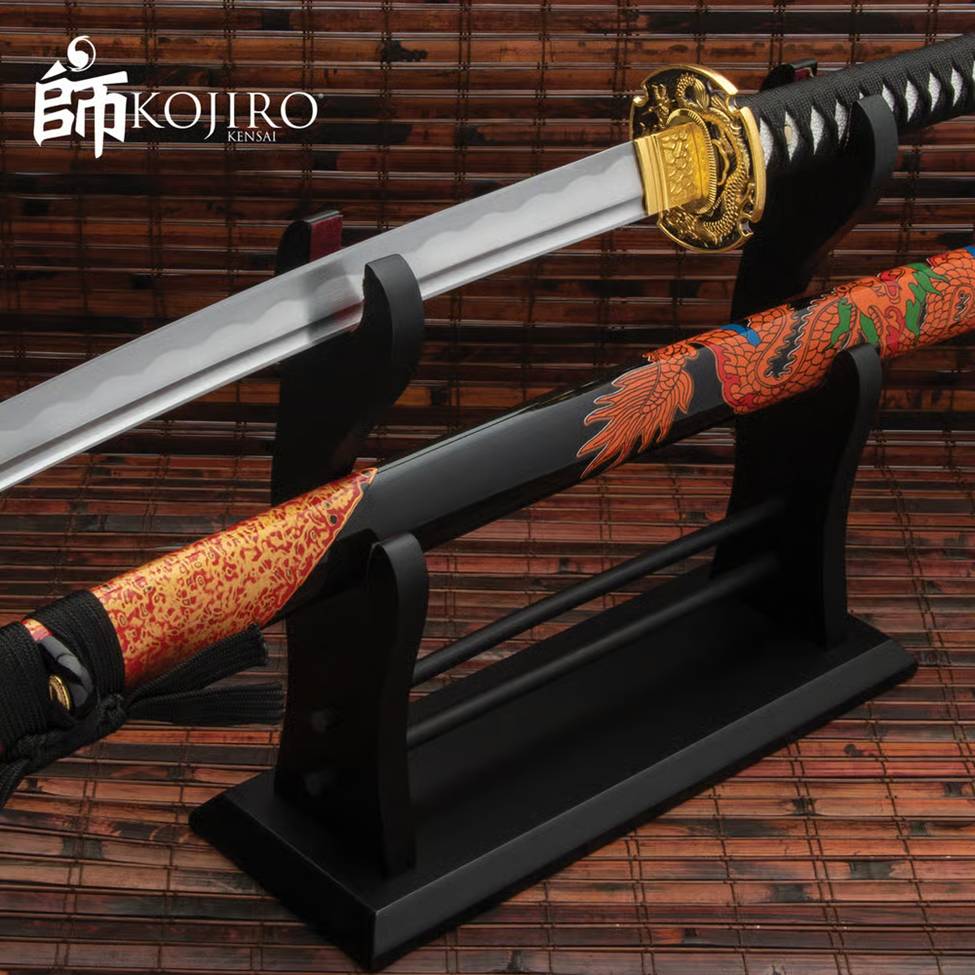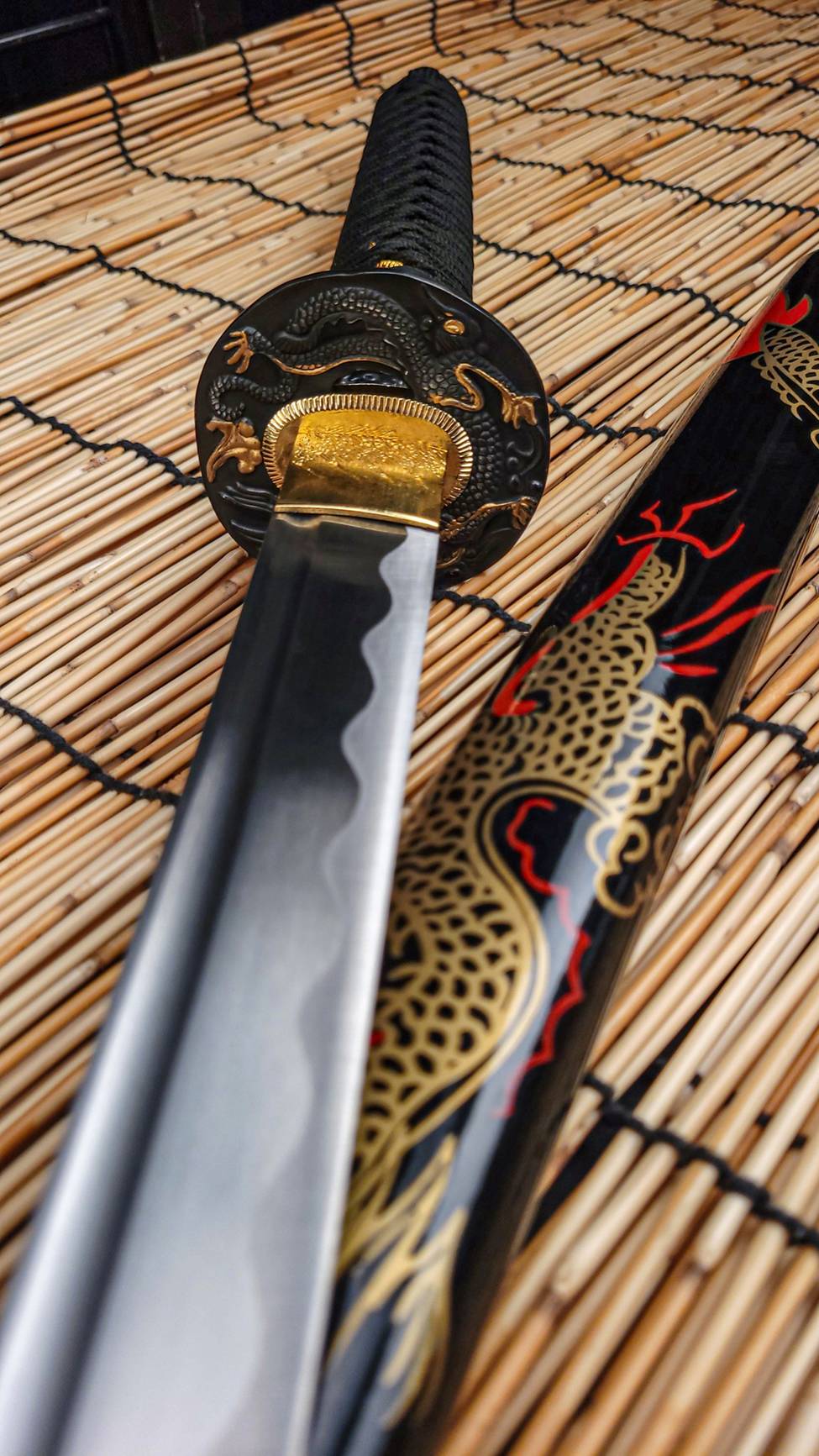A Japanese Sword Glossary: Getting Familiar with the Terminology of a Real Samurai Sword


There are many terms associated with Japanese swords that are foreign to those who are only familiar with western sword terminology. The following list will cover some of the major ones, some of which are actually parts of a sword, whereas others are types of sword patterns or other general terms.
These are only some of the more common terms associated with real samurai swords and other Japanese swords, but there are hundreds of others, many of which are used to describe the condition of steel, imperfections in the surface of the blade, and to the shape and nature of the hamon line. Entire articles could be dedicated to each of these subcategories, but for the purposes of exposition, these are the main terms associated with Japanese swords, swordmaking, and the parts of a sword.
- Aikuchi: A type of tanto with no tsuba (guard).
- Bohi: A groove or fuller present in the blade of a Japanese sword.
- Bokken: A curved, wooden sword used for practice; called a waster in the West.
- Chisa Katana: A short katana, but not as short as a wakizashi.
- Choji (or choji abura): Sword oil, typically of or containing clove oil, used for maintenance.
- Daisho: A pair of swords, typically a wakizashi and katana.
- Fuchi: The collar on the hilt.
- Fukure: An imperfection in steel, often called an inclusion in English.
- Ha: The cutting edge of a real samurai sword.
- Habaki: The blade collar, often made from copper or brass; it locks the blade in the sheath.
- Hagane: The steel used to create a Japanese sword.
- Hamon: The pattern of the temper that serves as a differentiating line between the cutting edge and the back of the blade. A real hamon is produced during yaki-ire, or clay tempering, that produces a harder edge and softer spine.
- Ito: The hilt wrapping, commonly made of silk or cotton.
- Kao: The monogram of a swordsmith when left on the tang (nakago).
- Kaji: A Japanese swordsmith.
- Kashira: A buttcap or pommel on the end of the tsuka (hilt).
- Katana: A common Japanese sword pattern, with a blade longer than a wakizashi but shorter than an odachi sword.
- Kissaki: The point of a blade.
- Koiguchi: The opening of the saya (scabbard) or its fitting.
- Kojiri: The cap at the end of the scabbard.
- Mei: A swordsmith’s signature.
- Mekugi: A pin, typically bamboo, used to secure the tang in the hilt.
- Mekugi-ana: The hole in the hilt for a mekugi.
- Menuki: Ornaments or accessories for a sword’s hilt.
- Monouchi: The main cutting portion of the blade, just a few inches back from the kissaki.
- Mune: The back of a sword’s blade.
- Nagasa: A term for the length of a blade.
- Nakago: The tang of a Japanese sword.
- Nie: Crystals formed in steel during the processes of heating and quenching, generally large enough to be seen with the naked eye..
- Obi: A belt sash, used to secure a Japanese sword; the sword should be carried edge-upwards.
- Odachi (or o-dachi): A very large Japanese sword intended to be wielded with two hands. Sometimes also referred to as a nodachi. .
- Omote: A signature on the side of the nakago.
- Sageo: A cord, wrapped around the saya (scabbard) used to secure it to the obi.
- Saguri: A hook on the saya used to secure it to the obi while drawing the blade.
- Same: Rayskin (sometimes sharkskin) used to wrap the hilt of a real samurai sword.
- Saya: The scabbard.
- Sayashi: A scabbard maker.
- Seppa: A washer or spacer used in Japanese swordmaking.
- Shaku: a Japanese unit of measurement roughly equivalent to one foot. .
- Shirasaya: A plain wood scabbard used for storing or transporting a Japanese sword.
- Shoto: A short Japanese sword, typically between one and two feet.
- Sori: The curvature of a Japanese sword’s blade.
- Sun: A Japanese unit of measurement, approximately one inch. Ten sun equal one shaku.
- Tanto: A short Japanese dagger, with a blade about a foot long.
- Tsuba: The guard at the front of a Japanese sword’s hilt.
- Tsuka: The hilt or handle of a sword.
- Tsuka-ito: The hilt wrapping.
- Wakizashi: A short Japanese sword, longer than a tanto but shorter than a katana.
- Yaki-ire: The Japanese term for clay tempering, the process that gives a differential hardness to the edge and spine of the blade, resulting in a harder edge and softer spine. Yaki-ire also imparts the hamon line to the blade.
These are only some of the more common terms associated with real samurai swords and other Japanese swords, but there are hundreds of others, many of which are used to describe the condition of steel, imperfections in the surface of the blade, and to the shape and nature of the hamon line. Entire articles could be dedicated to each of these subcategories, but for the purposes of exposition, these are the main terms associated with Japanese swords, swordmaking, and the parts of a sword.


Explore Real Samurai Swords and Other Traditional Japanese Swords Here
Want to learn more about traditional Japanese swordsor explore battle ready replicas of popular patterns like katana, wakizashi, and odachi swords? Explore our collection at the previous link and if you’re looking for something specific, get in touch with us directly - we’ll be happy to help answer any questions you have before you add one of these swords to your collection!